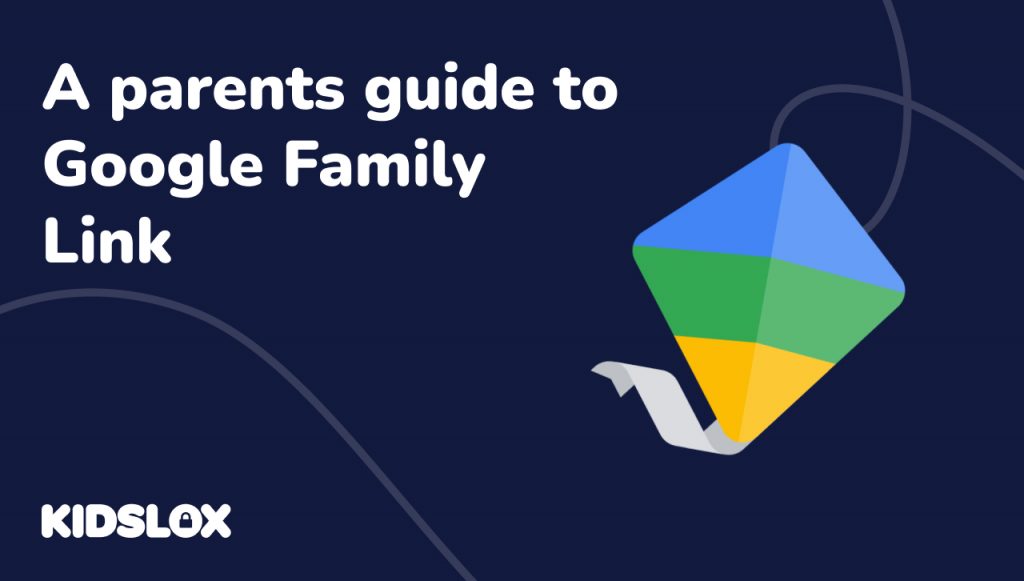It may be a social media-dominated world, but there’s one search engine that still rules supreme – Google. Beyond just being the world’s most popular search engine, Google’s Chrome browser is also the standard for web browsing.
With so many children and teens using Android devices and Chromebooks, which heavily integrate Google’s services, it’s crucial for parents to understand how to protect their kids online, especially on an Android device. Managing and monitoring usage on such devices is essential for children’s safety.
Enter Google Family Link – a parental control app designed to help you manage your child’s digital experience on these platforms.
Parental control tools continue to play a role in safeguarding children from inappropriate content, managing screen time, and helping families build healthy digital habits. And as the primary offering from Google, Google Family Link offers a range of features to assist parents in this task. Still, it’s important to understand its capabilities and limitations to determine if it fits your family’s needs.
Let’s look at some of the key features and functionalities of Google Family Link, how they stack up against other options on the market, and how you can ensure your child’s safety and well-being while using tech.
What Is Google Family Link?
Google Family Link was created to empower parents to guide their children’s online activities, promote healthy digital habits, and protect them from potential online risks.
Offering a set of tools and features that allow parents to monitor and control their children’s device usage, Family Link aims to strike a balance between fostering children’s curiosity and exploration while maintaining a safe digital environment.
Parents must manage the child’s device effectively, including securing the child’s password and protecting the child’s personal information, to ensure a comprehensive safeguard against potential online risks.
Some of the key goals Google has for Family Link include:
- Online Safety: Family Link helps parents shield their children from age-inappropriate content, websites, and apps, reducing the risk of exposure to harmful or explicit material. Managing the child’s personal information is a key aspect of this goal, ensuring that privacy settings and app permissions are appropriately configured to protect children. With Google powering so many of today’s top devices, ensuring children and teens don’t stumble on inappropriate content is a priority.
- Screen Time Management: By enabling parents to set time limits and establish device usage schedules, Family Link encourages a healthy balance between online and offline activities, preventing excessive screen time.
- Fostering Digital Literacy: Family Link gives parents tons of customized insights into their children’s online activities, creating opportunities for open discussions about digital citizenship, responsible technology use, and critical thinking skills. This includes guiding children on how to manage their personal information responsibly.
- Parental Involvement: With features like app management and location tracking, Family Link allows parents to stay involved in their children’s digital lives, providing guidance and support as needed – key when children are involved in activities, homework, and social interactions online.
The risks of letting our kids spend too much time online are well-documented, from cyberbullying and exposure to inappropriate content to the impact on mental health and overall well-being.
That’s why parents need to have tools like Family Link that help them manage their children’s screen time and encourage a healthy balance between online and offline activities.
How To Set Up The Google Family Link App
Setting up Google Family Link is a straightforward process that can be completed in a few simple steps. Let’s walk through the crucial step of creating an own Google account for your child and linking it to your own account using the Family Link app.
It’s important to configure the data settings for your child’s account to ensure privacy and security, giving you control and oversight over your child’s digital activities.
Step 1: Download the Family Link App
- On your own device (Android or iOS), open the Google Play Store or Apple App Store.
- Search for “Google Family Link.”
- Download and install the Family Link app.
Step 2: Create Your Child’s Google Account
- Open the Family Link app on your device.
- Tap “Create a new account for a child.”
- Follow the on-screen instructions to create a new Google Account for your child.
- Enter your child’s name, birthday, and gender.
- Create a unique username (email address) for your child.
- Set a password for your child’s account.
- Review and agree to the Google Terms of Service and Privacy Policy.
Step 3: Set Up Your Child’s Account On The Device
- If your child already has a device, open the Family Link app on your device and tap “Connect existing device.”
- Follow the prompts to sign your child into their device using their new Google Account.
- If you need to set up a new device for your child:
- Turn on the new device and follow the setup wizard.
- When prompted, sign in using your child’s new Google Account.
- Follow the on-screen instructions to complete the device setup.
Step 4: Configure Parental Controls
- In the Family Link app on your device, tap on your child’s profile.
- Customize the parental control settings to suit your family’s needs:
- Set daily screen time limits.
- Establish device bedtime schedules.
- Manage app permissions and purchases.
- Adjust content restrictions for Chrome, Google Search, and YouTube.
- Enable or disable location tracking.
- Review and confirm the settings you’ve chosen.
With Google Family Link set up, you can now begin to monitor and manage your child’s device usage. Here are some additional tips to help keep your child safe online:
How Well Does Google Family Link Work?
Google Family Link offers a robust set of parental control features that can help you manage your child’s digital life, including setting digital ground rules that foster a balanced and healthy digital lifestyle for children. These skills are crucial for guiding online behavior, managing screen time, and navigating the digital world as a family.
However, it’s essential to understand its strengths and limitations to determine if it’s the right fit for your family. Let’s explore how well Family Link works and compare it to Kidslox, another leading parental control solution.
Strengths of Google Family Link
- Easy Setup: Family Link provides a straightforward, user-friendly setup process that allows parents to quickly create a Google Account for their child and link it to their own account.
- Screen Time Management: Family Link’s screen time management features are effective, allowing parents to set daily limits, establish bedtime schedules, and lock devices remotely when needed.
- App Management: Parents can easily approve or block apps their child wants to download from the Google Play Store, as well as manage in-app purchases.
- Location Tracking: Family Link’s location tracking feature works well, enabling parents to see their child’s device location in real-time, as long as the device is turned on and connected to the internet.
Limitations of Google Family Link
- Imperfect Content Filtering: While Family Link offers content filtering for Chrome, Google Search, and YouTube, some parents complain that the filters are not effective. Some age-inappropriate content may still slip through, requiring ongoing parental vigilance.
- Limited Cross-Platform Support: Family Link works best on Android devices and Chromebooks. Its features are limited when used on iOS devices or web browsers, which can be problematic for families with children using multiple platforms.
- Automatic Opt-Out for Teens: When a child reaches the age of 13 (or the applicable age in their country), they can choose to opt-out of Family Link supervision. This can be concerning for parents who want to maintain oversight of their teen’s online activities.
How Kidslox Can Help Enhance Your Family’s Digital Protection
While Google Family Link provides a solid foundation for parental controls, Kidslox takes digital safeguarding to the next level with its advanced features and comprehensive cross-platform support.
Unlike Google Family Link, Kidslox offers additional features that complement the use of Google apps and provide safer alternatives for video content, such as YouTube Kids, for children. These additional capabilities empower parents to create a more tailored and secure online environment for their children.
Telescope: Real-Time Device Monitoring
One of Kidslox’s standout features is its Telescope function, which allows parents to view their child’s device screen in real time.
Telescope is particularly useful for younger children who may need more direct supervision or when parents suspect their child might be engaging in inappropriate or risky online behavior. By seeing exactly what their child is doing on their device, parents can intervene promptly and provide timely guidance.
TikTok Viewing History: Promoting Responsible Social Media Use
Social media platforms like TikTok have become increasingly popular among children and teens. However, these platforms can also expose kids to potentially harmful content or encourage excessive screen time.
Kidslox has released a new TikTok Viewing History feature that helps parents stay informed about the videos their child watches on the platform, enabling them to identify any concerning trends or inappropriate content. This insight allows parents to have more targeted conversations about responsible social media use and digital wellness with their children.
Nudity Scanner: Protecting Children from Explicit Content
Another innovative feature offered by Kidslox is its Nudity Scanner – a unique feature that uses innovative technology to detect and alert parents to potential nudity in images on their child’s device.
This tool can be incredibly valuable in protecting children from accidental exposure to explicit content or even from the risks associated with sexting. By proactively identifying these images, parents can address sensitive issues with their children and guide appropriate online behavior and digital citizenship.
Multiple Usage Profiles: Tailoring Digital Experiences
Kidslox also recognizes that children’s digital needs may vary depending on the time of day or the context of their device use.
The Multiple Usage Profiles feature allows parents to create customized profiles for their child tailored to specific situations like school time, bedtime, or family time. By adjusting access to apps, websites, and device features based on these profiles, parents can ensure that their child’s device use aligns with their family’s values and priorities, promoting a healthier balance between online and offline activities.
Protect Your Family Online With Parental Controls
Google Family Link is a significant step forward in helping parents protect their children in the digital world. However, as new devices pop up and children’s digital needs become more complex, parents may seek even more advanced tools to ensure their family’s online safety. Kidslox offers a comprehensive parental control solution that builds upon the groundwork laid by Family Link.
Our robust cross-platform support and advanced features provide parents with the granular control and flexibility they need to navigate the challenges of modern digital parenting.
To learn more about how Kidslox can support your family’s digital well-being, visit us online. It’s time to take the first step towards a safer, more balanced online future for your children.





